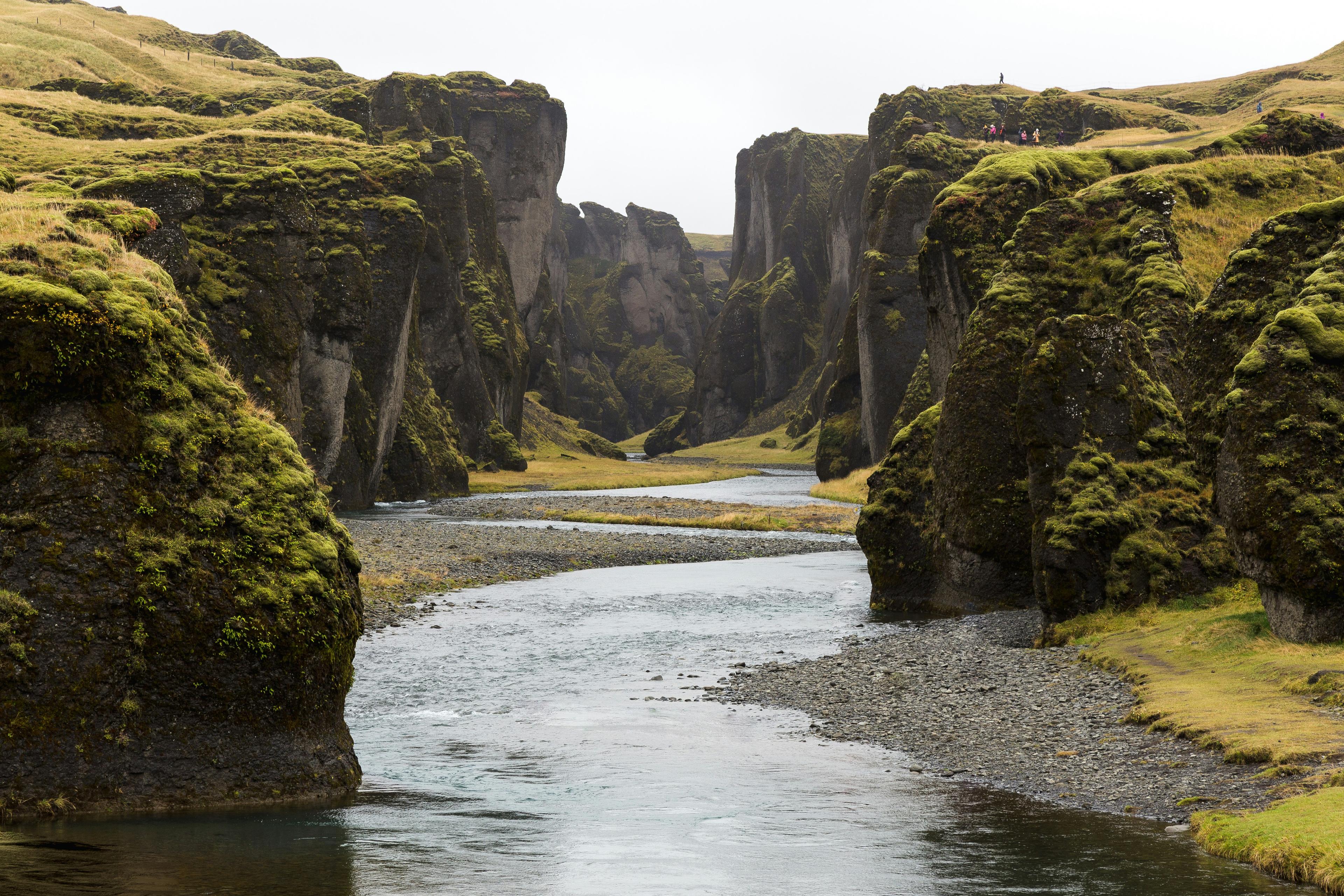This article delves into some of the most famous Icelandic canyons like Fjaðrárgljúfur, Stuðlagil, and Ásbyrgi, noting their distinct features and offering practical advice for adventurers eager to explore these natural wonders.
Fjaðrárgljúfur Canyon
Located in the southeast of Iceland, Fjaðrárgljúfur is a dramatic and ancient canyon stretching over two kilometres long and 100 meters deep. The canyon is renowned for its steep walls and winding river.
It’s easily accessible via a short drive from the Ring Road, with a parking area leading to a well-maintained walking path that offers multiple viewing platforms. The best times to visit are late spring and summer when the access road is open and the landscape is lush and verdant.
Attractions Near Fjaðrárgljúfur
Kirkjubæjarklaustur: Just a short drive from Fjaðrárgljúfur, this small village offers several interesting attractions, including the historic Kirkjugólf, which is a natural pavement of basalt columns, often mistaken for a man-made structure. Nearby are also the Systrafoss waterfall and the peaceful Systravatn Lake, which are perfect for a relaxing afternoon after exploring the canyon.
Stuðlagil Canyon
Stuðlagil became one of Iceland’s must-visit destinations due to its stunning basalt columns and a striking azure river that flows through it. The canyon was relatively unknown in East Iceland until the nearby Kárahnjúkar Dam decreased the river’s flow, revealing the breathtaking basalt formations.
There are two main access points: one involves a longer hike that allows viewing the columns from the bottom of the canyon, while a shorter route offers a quick view from above. The best visit times are from late spring to early autumn.
Attractions Near Stuðlagil
Hengifoss and Litlanesfoss Waterfalls: Further upstream from Stuðlagil Canyon, these waterfalls offer remarkable sights. Hengifoss is particularly famous for its layers of red clay sandwiched between basaltic layers, making it one of Iceland’s tallest and most striking waterfalls.
Hallormsstaðaskógur: As Iceland’s largest forest, this area offers a change of scenery with lush woodland and numerous hiking trails, providing a stark contrast to the barren, rocky landscapes usually found in Iceland.
Ásbyrgi Canyon
Ásbyrgi is part of the Vatnajökull National Park, located north of Iceland. This horseshoe-shaped depression is said to have been formed by the hoof of Odin’s horse, Sleipnir.
The canyon walls rise dramatically 100 meters above a lush, forested valley. Walking trails abound, ranging from easy walks to more strenuous hikes leading to stunning canyon vistas and surrounding landscapes. The canyon is also a fantastic bird-watching spot, especially during the summer months.
Attractions Near Ásbyrgi
Dettifoss Waterfall: Located within Vatnajökull National Park, Dettifoss is considered the most powerful waterfall in Europe. Its immense power and misty ambience capture visitors' attention.
Húsavík: Often called the whale-watching capital of Iceland, Húsavík offers boat tours that are almost guaranteed to spot whales. In addition, the town’s Whale Museum is highly educational and enriching for all ages.
Múlagljúfur Canyon
Múlagljúfur Canyon is somewhat less known but equally impressive, located near Höfn in southeast Iceland. It offers stunning views of deep valleys carved by ancient rivers and waterfalls cascading down its walls.
The hike is moderately challenging, rewarding explorers with panoramic views and fewer crowds, offering a more solitary experience with nature.
Attractions Near Múlagljúfur
Jökulsárlón Glacier Lagoon: Just beyond Múlagljúfur, Jökulsárlón is a stunning glacial lagoon filled with icebergs. Nearby, Diamond Beach, where icebergs wash onto a black sand beach, makes for spectacular photos.
Vatnajökull Glacier: Being on the South Coast, near Vatnajökull, Europe’s largest glacier, provides opportunities for ice cave tours and glacier hikes that offer a deeper exploration of Iceland’s icy landscapes.
Sigöldugljúfur Canyon
Sigöldugljúfur, known as the ‘Valley of Tears’, is famous for its series of waterfalls spilling into the valley below. It is relatively remote, located in the Highlands, and is best accessed during the Icelandic summer when the Highland roads are passable. This canyon is a paradise for photographers looking to capture Iceland’s interior’s raw, untouched beauty.
Attractions Near Sigöldugljúfur
Landmannalaugar: Known for its colourful rhyolite mountains and soothing hot springs, Landmannalaugar is accessible via the Fjallabak Nature Reserve and is a paradise for hikers. It’s a fantastic area to explore the raw beauty of Iceland’s highlands, with trails leading through lava fields and past steaming geothermal vents.
Hekla Volcano: One of Iceland’s most active and legendary volcanoes, Mount Hekla is visible from Sigöldugljúfur and offers challenging hikes. The area around Hekla is also known for its lunar-like landscapes and is a testament to Iceland’s volcanic nature.
Glymur Waterfall Canyon, accessible via a scenic hike through picturesque terrain, offers visitors a glimpse into Iceland's raw and untouched beauty. Located in the serene Hvalfjördur fjord, just an hour's drive from Reykjavík, this hike is very popular among visitors and locals alike. However, the hike is quite steep and exposed, making it best suited for experienced hikers and only in summer and early autumn adventures.
As Iceland's second-highest waterfall, Glymur plunges into a hundred-meter-deep canyon, creating a truly breathtaking sight. Beyond its natural splendour, Glymur Waterfall Canyon evokes a sense of mystery and wonder, inviting explorers to delve into its depths and uncover its hidden secrets.
Attractions near Glymur
offer a relaxing retreat amidst Iceland's rugged beauty, where visitors can soak in geothermal pools while surrounded by stunning landscapes.
Thingvellir National Park, part of the renowned Golden Circle route, is a UNESCO World Heritage Site known for its historical and geological significance. Here, visitors can explore dramatic landscapes, walk between tectonic plates, and learn about Iceland's rich cultural heritage.
Geology Behind Iceland’s Canyons
Iceland’s position atop the Mid-Atlantic Ridge makes it one of the most volcanically active locations on Earth. This volcanic activity plays a crucial role in the formation of many of the country’s canyons.
As magma pushes up from beneath the Earth’s crust, it sometimes reaches the surface to form volcanoes, while at other times, it solidifies underground to create new rock layers. Over time, these processes can cause the ground to fracture and form rifts. The best example is the Thingvellir Rift Valley, part of the Silfra fissure, where the North American and Eurasian tectonic plates are pulling apart.
Additionally, many of Iceland’s canyons have been carved out by the erosive forces of flowing water eroding rock over thousands to millions of years. During the Ice Age and in periods of glacial melt that followed, vast quantities of meltwater helped deepen and shape the canyons.
Stuðlagil Canyon, for instance, saw its distinctive basalt columns exposed by the erosive action of the Jökulsá á Dal river, particularly after the construction of the Kárahnjúkar Dam reduced the river’s flow, revealing the canyon’s full splendour.
Meanwhile, glaciers also play a significant role in the formation of canyons in Iceland. These massive bodies of moving ice grind down the rock beneath them through a process known as glacial erosion.
As glaciers advance and retreat, they scour the landscape, leaving deep, U-shaped valleys and canyons behind. For example, Múlagljúfur Canyon was significantly shaped by glacial action, showcasing steep cliffs and deep valleys typical of glacial erosion.
Discovering the canyons of Iceland is a journey through a land of myth, history, and nature's overwhelming beauty. Each canyon, with its unique features and breathtaking vistas, offers a glimpse into the island’s geologic past, making it a destination that should not be missed by nature lovers and adventure seekers.
Whether you choose a guided tour or decide to explore on your own, the canyons of Iceland are sure to provide an unforgettable experience. Prepare to be inspired by the sheer magnificence of these natural wonders, and to create memories that will last a lifetime.
Ready to witness these spectacular creations of nature? Pack your hiking boots, charge your camera, and prepare for an awe-inspiring adventure only Iceland can offer!
Practical Information about Iceland's Canyons
Accessibility
While many of Iceland's breathtaking canyons are easily accessible via main roads, offering parking facilities and marked trails for visitors, it's important to note that accessibility can vary depending on the specific canyon and its location.
For example, iconic destinations like Múlagljófur may require visitors to embark on a hiking adventure to fully experience their wonders. On the other hand, remote gems such as Sigöldugljófur might demand either hiking skills or the use of specialized vehicles, such as 4x4s, to navigate the rugged terrain and reach their secluded beauty.
Seasonal Considerations
Understanding the seasonal nuances is crucial when planning a visit to Iceland's canyons. Some canyons, like Fjaðrárgljúfur, may be closed during the thaw season due to safety concerns, emphasizing the importance of checking local regulations and conditions before embarking on any journey.
Generally, the prime time to explore Iceland's canyons with optimal conditions and accessibility is during the summer months, from late June to early September, extending into October if weather permits.
However, winter, from November to April, can present considerable challenges for canyon exploration, particularly without the guidance of a tour. The arrival of spring also brings its challenges, with thawing conditions and lingering snow posing potential obstacles to safe exploration.
Safety Information
Visitors must prioritise safety at all times. Paying close attention to signage, sticking to designated trails, and respecting the natural environment is essential to ensure a safe and enjoyable experience.
Additionally, staying informed about weather forecasts and road conditions is crucial, particularly for those planning self-guided excursions, to mitigate any potential risks associated with adverse conditions.
By staying informed and exercising caution, you can fully appreciate the unparalleled beauty and serenity of Iceland's canyons while ensuring your own safety and the preservation of these natural wonders for future generations to enjoy.
Photography and Drones
For photographers, timing is key when capturing the captivating beauty of Iceland's landscapes. The early morning and late afternoon present the ideal lighting conditions, casting a soft, golden glow that enhances the natural features and atmosphere of the surroundings.
However, amidst the allure of capturing the perfect shot, it's crucial for photographers to prioritize the preservation of Iceland's delicate ecosystems. While the landscapes may seem inviting, it's essential to remain on designated paths to protect the fragile vegetation, particularly the moss that carpets many areas.
The unique environmental conditions in Iceland mean that damaged vegetation may take decades to recover, underscoring the importance of treading lightly and minimizing human impact.
Some locations in Iceland have banned the use of drones due to their potential impact on wildlife, particularly in areas like canyons that serve as natural habitats for Iceland's diverse bird species. The presence of drones can disturb nesting birds, leading them to avoid laying eggs or nesting in the canyon for subsequent seasons.
To ensure the well-being of wildlife and the preservation of these natural habitats, photographers should refrain from using drones in restricted areas and familiarize themselves with the rules and regulations governing drone usage before embarking on their photography expeditions.
Questions and Answers about Canyons in Iceland
Fjaðrárgljúfur is arguably the most famous canyon in Iceland, known for its dramatic and picturesque landscapes. It also became well-known after the Canadian musician Justin Bieber filmed a music video here in 2015.
Iceland has numerous canyons, but there is no exact count as many smaller and less-known canyons exist throughout the country’s diverse landscapes.
Fjaðrárgljúfur is arguably the most famous canyon in Iceland, known for its dramatic and picturesque landscapes. It also became well-known after the Canadian musician Justin Bieber filmed a music video here in 2015.
The canyons in Iceland were primarily formed due to erosion by rivers and glacial meltwater, which was further influenced by volcanic activity, which created and altered the landscape dramatically.
The most breathtaking canyons in Iceland include Fjaðrárgljúfur, Stuðlagil, Ásbyrgi, Glymur, Múlagljúfur, and Sigöldugljúfur.
Visitors can safely explore the canyons of Iceland by adhering to marked trails, respecting safety signs, wearing appropriate footwear, and checking weather conditions before heading out.
The best time to visit Iceland’s canyons is from late spring to early autumn (May to September), when the weather is milder and the days are longer.
While there are no specific canyon tours, custom-made private tours that include canyon visits can be arranged. For example, our Landmannalaugar tour consists of a stop at Sigöldugljúfur, allowing visitors to experience one of the most picturesque canyons in Iceland.
Recommended tours
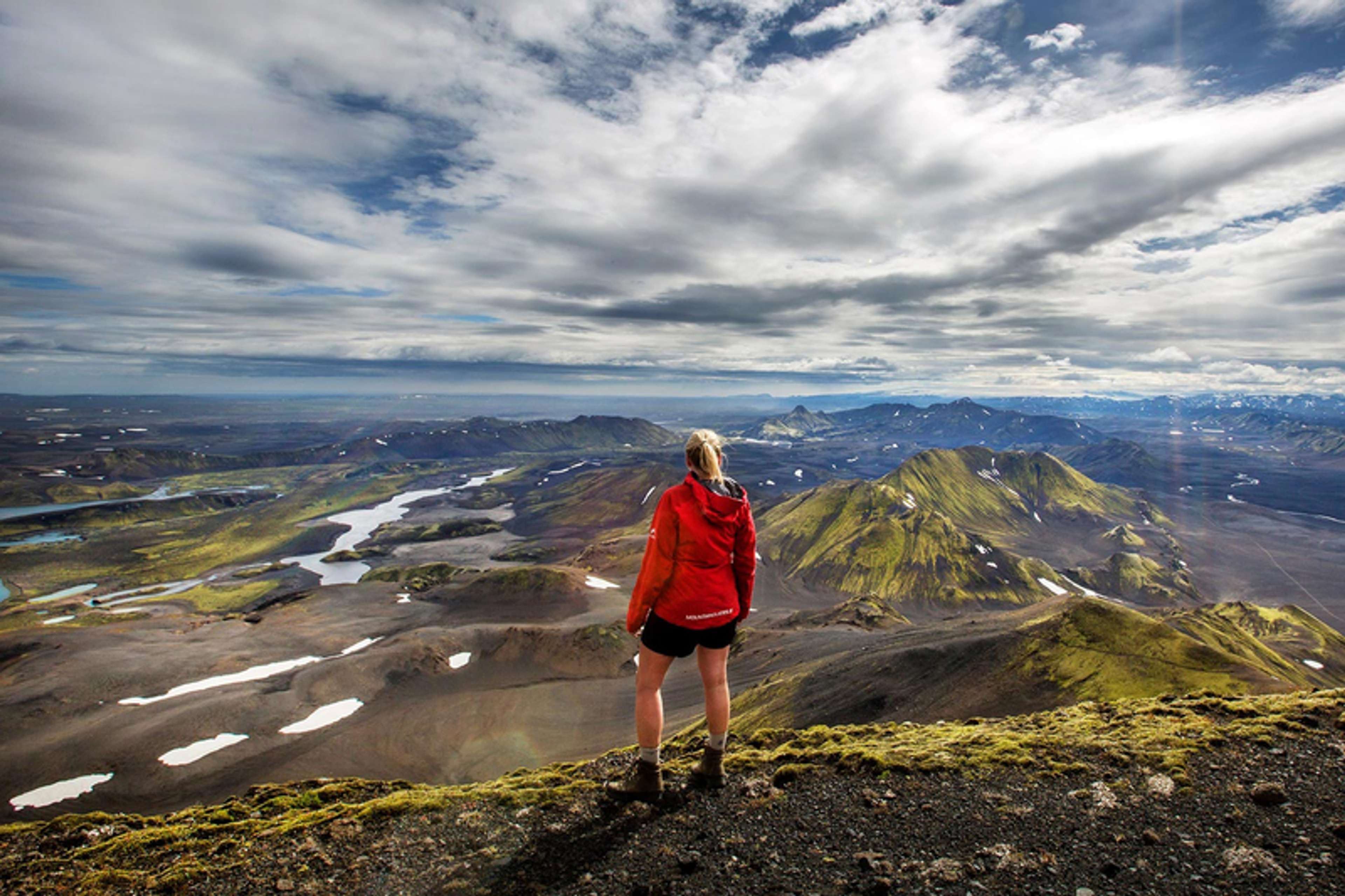
The Volcanic Trails
Unveil Iceland's wild beauty on a 7-day trek through Vatnajökull National Park. Traverse moss, waterfalls, canyons, and deserts. An untamed Icelandic odyssey.
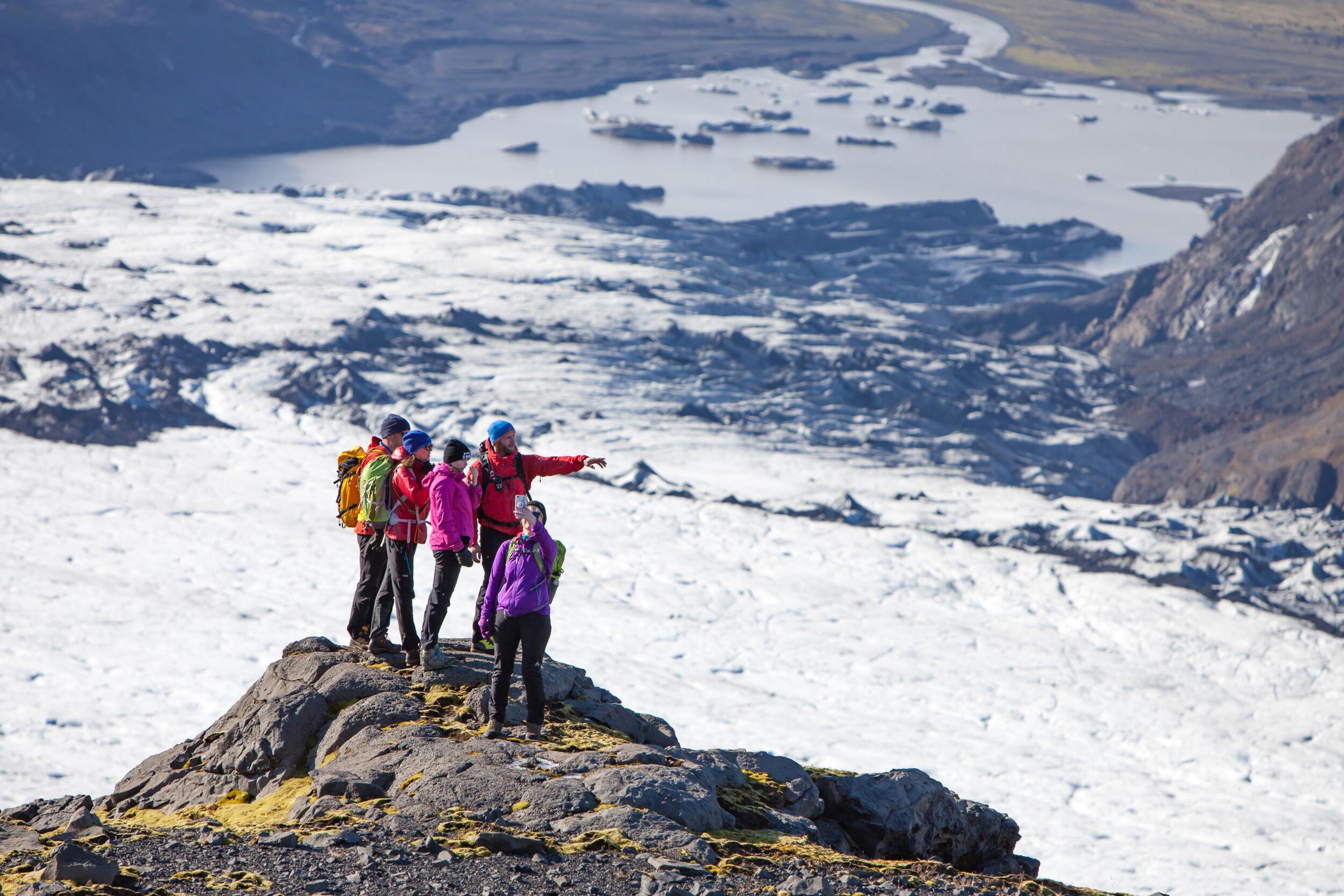
Glacier Panorama Trail
Enjoy a versatile, scenic hike by the volcano Katla that rewards you with a stunning panoramic glacier view of Eyjafjallajökull, Sólheimajökull and other unique landscapes of the scenic south coast. This guided day tour, which is moderately difficult, gives you a glimpse into the world of Iceland’s geological wonders and how glaciers have shaped the land for thousands of years. A specially modified glacier truck transports you approximately 750 metres to start the hike, which will generally continue downhill. Participants should be in good physical shape with some mountain climbing experience.

South Coast & Glacier Hiking
Enjoy a guided glacier walk, exploring the beautiful, icy wonderland of Iceland's Sólheimajökull Glacier. Enjoy the fresh air, interesting shapes and hues of the ice and marvel at the vast and remote slice of south Iceland. Get up close and personal with one of the country's most famous glaciers! Expect a 2-hour drive from Reykjavík, a 1.5-hour glacier hike, and some sightseeing along the south coast and back to Reykjavík.

Day Hike over Fimmvörðuháls
Want to experience a slice of the highlands but don’t have the time for a multi-day hike? Book this guided day tour over the spectacular Fimmvörðuháls pass! A professionally trained guide will lead you on this trail, named one of the Best Hikes in the World by National Geographic. Expect a demanding 10-hour hike where you will see fantastic glacier views, volcanic craters, vast canyons and impressive waterfalls. The 22-kilometre hike is available July-August; participants must be at least 12 years old and up for a challenging hike.
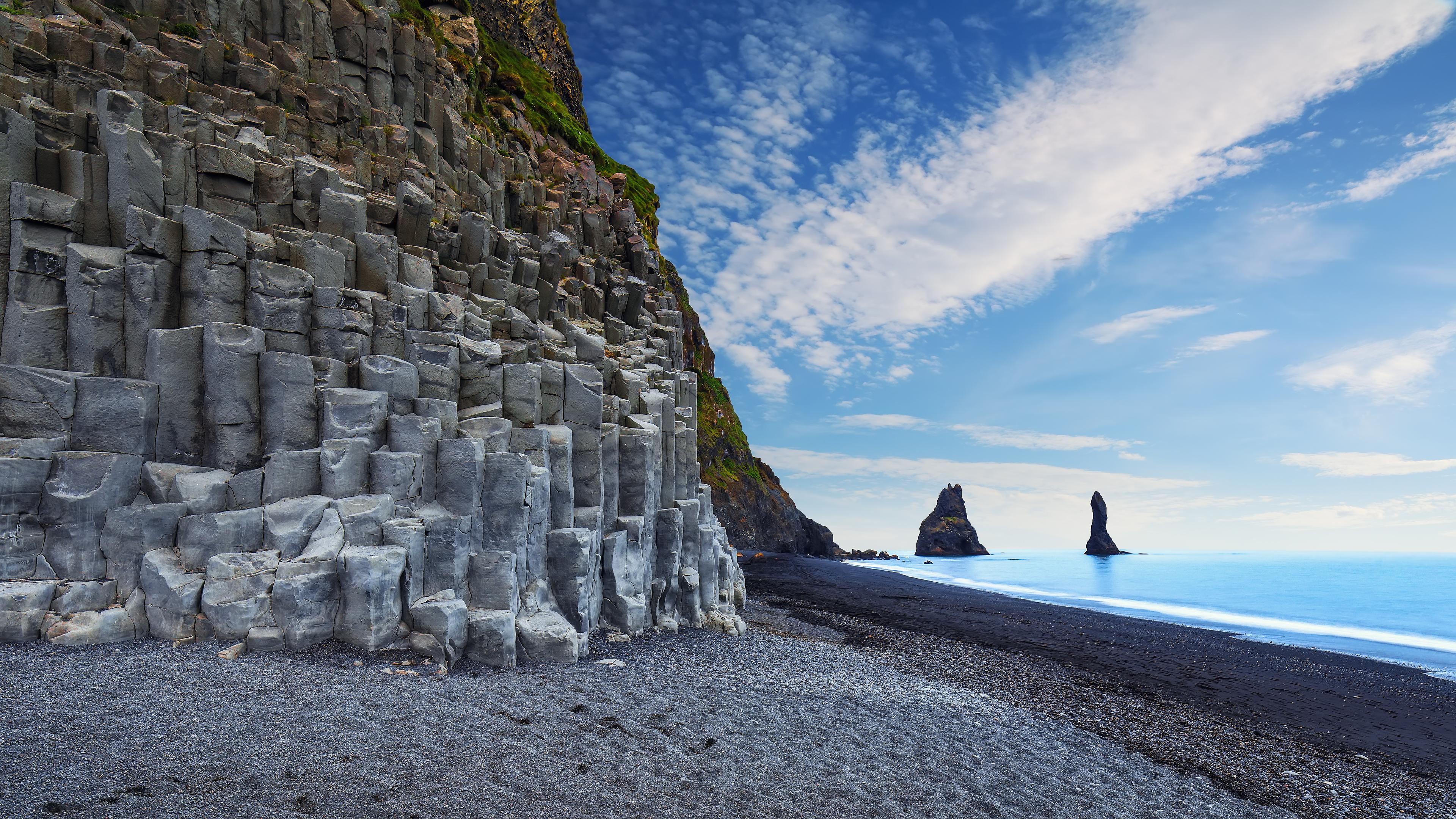
South Coast Adventure
This South Shore Adventure is the ideal tour for nature lovers looking to explore some of the most unique and scenic sights in the South. Get ready for an action-packed day seeing epic waterfalls, charming towns, vast glaciers, and the most famous black sand beach in Iceland!
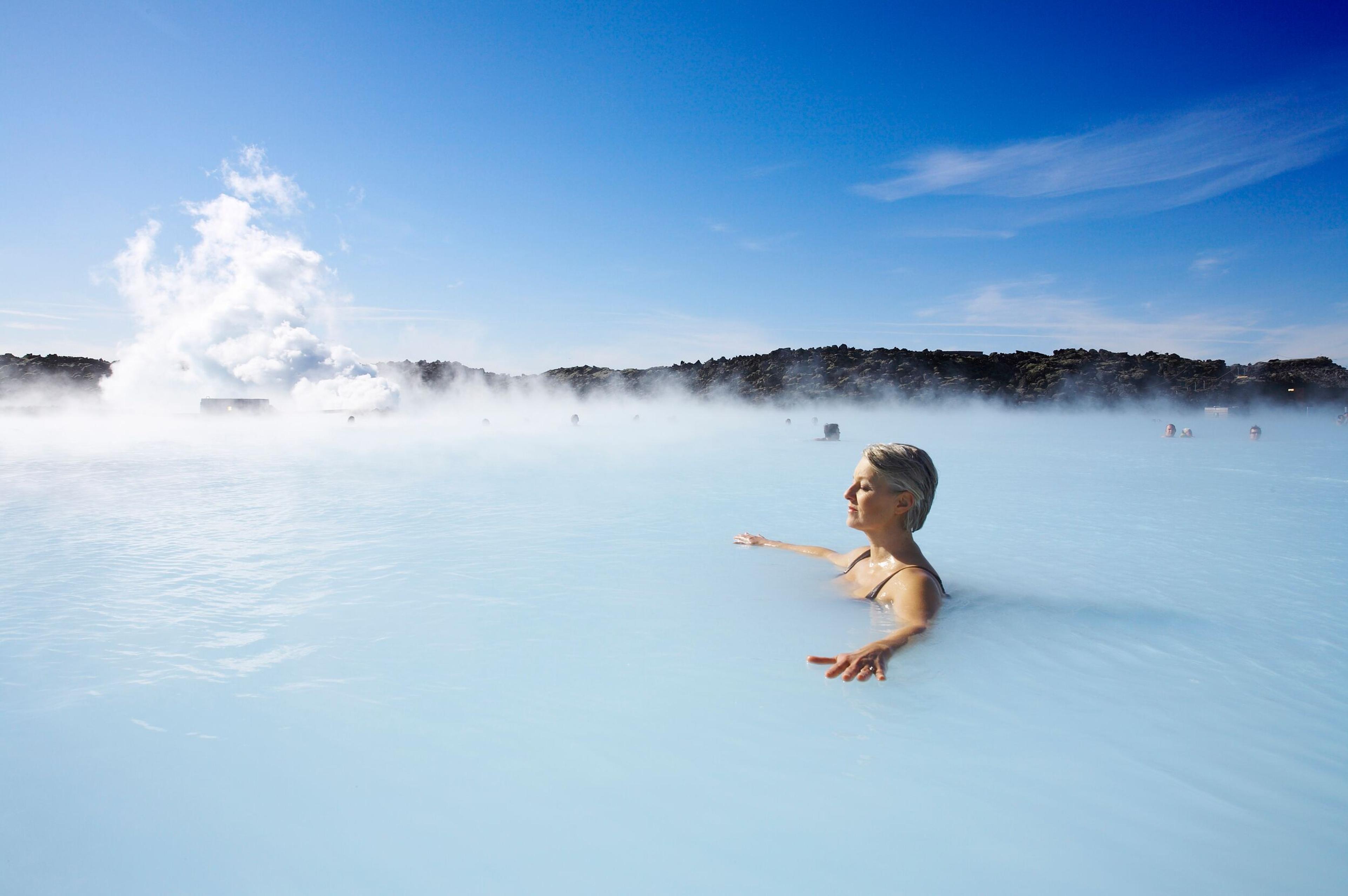
- Best seller
- Popular
Blue Lagoon & Northern Lights
Enjoy a perfect winter day in Iceland! Experience the best of Iceland with this package of two of the island’s most popular tours in one day! Soak in the milky blue healing water of the Blue Lagoon, which is one of Iceland's most famous tourist attractions and is considered by many to be a once-in-a-lifetime experience and an unmissable part of a visit to Iceland. After your return to Reykjavík, a guide will lead you on a search for the elusive northern lights! Watching the lights dance and flicker in the sky, changing shape and colour, is incredible. Prepare to be dazzled!


